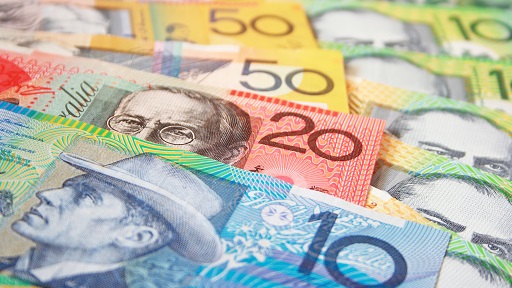US market participants are back from their long weekend today, so trading volumes are expected to pick up today. That being said, markets remain in wait and see mode ahead of key global central bank events later this week, most important of which will be the ECB’s policy decision on Thursday, where analysts now expect the bank to announce a reduction in the pace of monthly bond-buying under the PEPP remit, though no decision on QE policy beyond the expiration of the PEPP in March 2022 is expected to be reached. As a result, US stocks are pretty much flat in pre-market trade, with the S&P 500 unchanged in the mid-4530s, well within recent intra-day ranges. US bond markets have been a little more interesting; yields are heading higher, with nominal 10-year yields around 1.37% as the post-NFP rally continues and 10-year TIPS yields now above -1.0%; perhaps bond markets are telling us to continue to expect a QE taper announcement from the FOMC later this month or in October, rather than later in the year, given strength in shown in the US unemployment rate and US wage growth in the last labour market report.
An interest rate decision from the RBA and Chinese August trade numbers out last night have been the main market catalysts. The former does not appear to have impacted macro sentiment (recap of the meeting and AUD reaction below), while the latter was mixed; in USD terms, China’s trade surplus was much larger than expected, powered by faster than expected growth in exports, which some analysts are citing as supportive for the broader macro picture as it goes against the narrative of a synchronised China and US growth slowdown. However, in CNY terms, the trade numbers were a little weaker than expected. Nonetheless, the Hang Seng and Shanghai Comp gained 0.7% and 1.5% respectively. The Nikkei 225 (+0.9%) also saw further strong gains amid further pro-fiscal stimulus rhetoric from key front-runners to replace outgoing Japanese PM Suga.
European stocks have failed to sustain the positivity of the Asia session, with the Stoxx 60 down about 0.3%, but this is likely being driven by profit-taking following yesterday’s strong gains which brought the major pan-European index to within a scratch of record levels as Thursday’s ECB meeting looms. Eurozone data this morning has mostly been good; German industrial production figures for July were released and were stronger than expected, rising for the first month in five, though the country’s most important sector continues to suffer amid Covid-19 related disruptions to global supply chains. Q2 Eurozone GDP and employment change figures were also better than expected, while Germany’s ZEW sentiment survey for September was worse than expected but mostly ignored. But Eurozone data, as far as European equity markets are concerned, is set to be overshadowed by the ECB meeting for the rest of the week.
Turning now to look at FX markets; the Australian dollar is the underperforming currency post-RBA rate decision overnight and is down about 0.5% versus the US dollar. The RBA announced that it would go ahead with a previously announced reduction of its weekly bond purchases from AUD 5B to AUD 4B later this month, triggering some short-lived upside in the Aussie given that analysts had been split over whether the bank would delay the QE taper or not. However, the bank pushed back the timeline for further tapering; where in July the RBA had signalled that another taper (from AUD 4B to AUD 3B in weekly bond purchases) was likely from November, the bank now says it will maintain weekly purchases at AUD 4B until at least mid-February. Net-net, the above is being framed as a “dovish taper”, hence why AUD has reversed its earlier strength. The decision to go ahead with the taper this month despite the ongoing strict lockdowns in several key Australian cities (Sydney, Melbourne and Canberra to name a few) reflects their optimistic stance that the current outbreak will “delay, not derail” the economic recovery, given their confidence that accelerating vaccine rollouts will reduce lockdown risk into Q4 and 2022. Hence the RBA thinks the Aussie economy will be back to the pre-pandemic path by mid-2022 and a number of local banks suspect the RBA may try to wind down net bond-buying to zero by then. This arguably quite optimistic/hawkish take on the economy’s prospects over the next few quarters seems to have been offset, as far as AUD is concerned, by the RBA’s dovish reiteration of its interest rate guidance, which says no hikes before 2024. According to MUFG, “even though the RBA has started to slow weekly QE purchases, its overall plans to normalize policy going forward remain amongst the more dovish spectrum put forward by G10 central banks… It suggests that it will be more challenging for the Australian dollar to extend its recent rebound above the 0.7500-level and back towards the 200-day moving average at around 0.7600 in the near-term”. AUDUSD is currently testing 0.7400 to the downside ahead of a potential test of the 50DMA at 0.7369.
CAD is the next worst performer, down about 0.4% versus the dollar, amid what appears to be a combination of pre-Wednesday BoC meeting caution and weakness in crude oil markets, which analysts say continue to be weighed amid the latest news from Saudi Aramco about OSP cuts for their Asia customers. Note that Chinese imports of crude oil were shown to have risen by the latest trade figures overnight, which may offer some solace. Copper prices have tanked though as the Chinese data showed copper imports to be their lowest since June 2019 and down for a fifth consecutive month, which seems to be adding to commodity currency AUD and CAD’s woes. USDCAD upside is being restricted for now by the 200DMA just above 1.2600.
GBP is the third worst G10 FX performer, down about 0.3% on the day, amid what appears to be growing concern about an expected tax-hike proposal from PM Boris Johnson; he wants to increase the National Insurance (NI) tax to help fund social spending, but this tax is seen as regressive, given anyone with a job pays NI and so the burden falls disproportionately on the shoulders of lower-income workers. Economists fear such a hike could slow the recovery next year and have bearish implications for how high the BoE is able to hike interest rates. News on the EU/UK front with regards to the Northern Ireland protocol which they have spent the whole year bickering about appears to be more positive. But this, nor somewhat hawkish comments from BoE member Saunder this morning (he talked about the fact the BoE might have to raise rates in 2022 if inflation is persistently strong) hasn’t stopped GBPUSD slipping under 1.3800.
In terms of the rest of the G10; EUR and CHF are both flat against the buck, leaving EURUSD comfortably above the 1.1850 mark still and USDCHF still rangebound around 0.9150. NZD and JPY are both a tad lower, the former tracking the weaker Aussie dollar despite continued hopes that New Zealand’s zero Covid-19 policy seems to be working to bring cases down (allowing lockdown to be eased in most of the country), though NZDUSD is still above 0.7100, while USDJPY is being pushed higher by rising US yields but is still below 110.00.
The Day Ahead
There isn’t anything of note of the economic calendar today aside from the August US CB Employment Trends Index at 1500BST (now we’ve had the August jobs report, no one will pay attention) and diary price data in the afternoon out of New Zealand (which can sometimes move NZD). Thus, it’s set to be a quiet session, with market participants likely to ponder ongoing market themes such as the pandemic, the impact on growth and the future path of global central bank policy.




